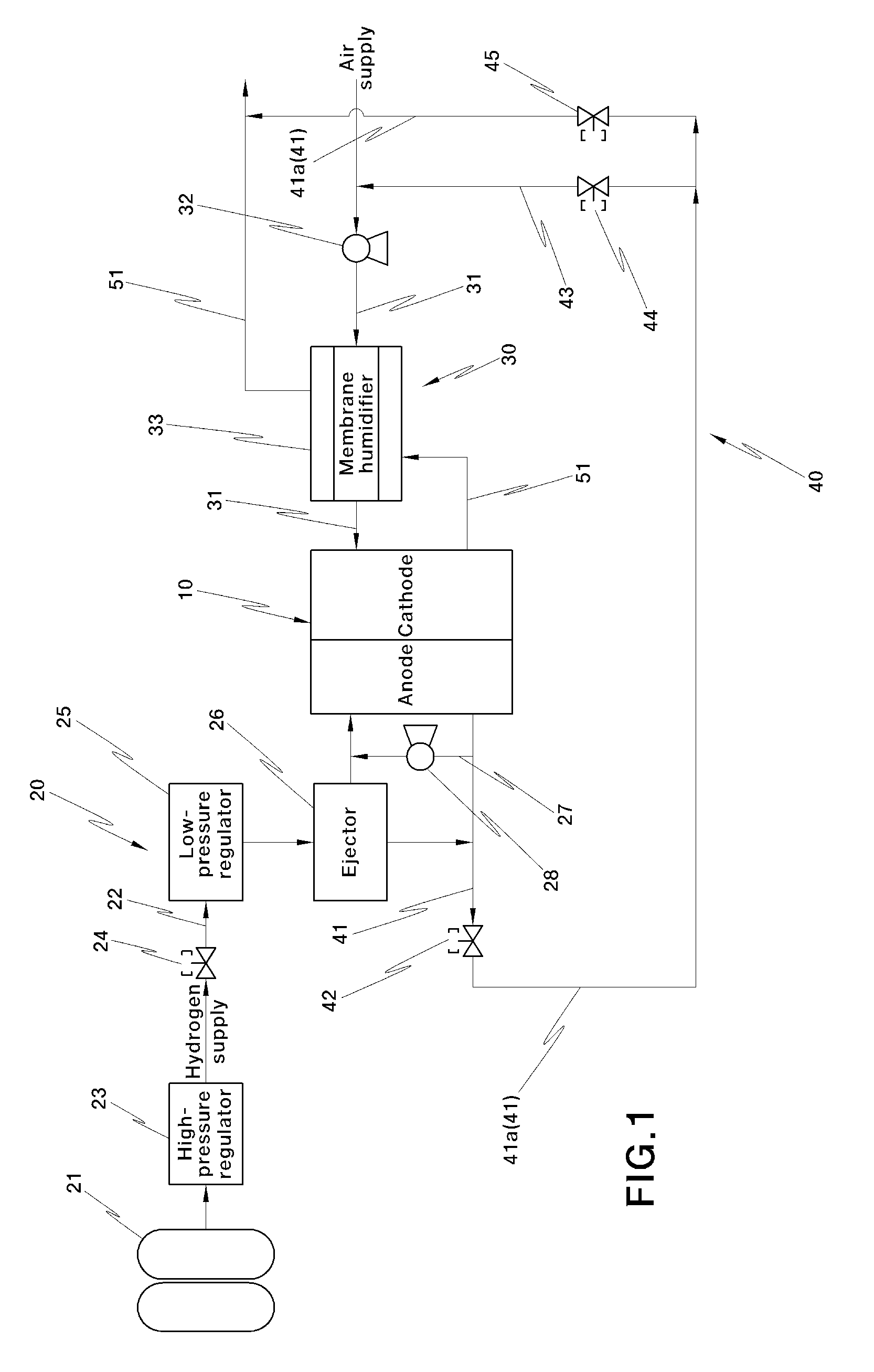Hydrogen exhaust system for fuel cell vehicle
a fuel cell and exhaust system technology, applied in the field of fuel cell systems, can solve the problems of affecting the performance of the fuel cell stack, clogging the flow field to impede the migration, and reducing so as to minimize the possibility of explosion, ensure the silence of the vehicle, and maximize the safety of the vehicl
- Summary
- Abstract
- Description
- Claims
- Application Information
AI Technical Summary
Benefits of technology
Problems solved by technology
Method used
Image
Examples
Embodiment Construction
[0034]In a preferred aspect, the present invention features a hydrogen exhaust system for a fuel cell vehicle, comprising a hydrogen exhaust line, a hydrogen purge valve provided in the hydrogen exhaust line, an outlet line as a part of the hydrogen exhaust line at a rear end of the hydrogen purge valve, an inlet line branched from the outlet line, a vehicle state detector for detecting a vehicle state, a controller; and a valve means.
[0035]In one embodiment, the hydrogen exhaust line is provided at an anode outlet of a fuel cell stack.
[0036]In another embodiment, the outlet line exhausts purge hydrogen discharged by the hydrogen purge valve to an air exhaust line at a cathode outlet of the fuel cell stack.
[0037]In another further embodiment, the inlet line exhausts purge hydrogen to an air supply line at a cathode inlet of the fuel cell stack.
[0038]In still another further embodiment, the controller outputs a control signal for selecting either the cathode outlet or the cathode inl...
PUM
| Property | Measurement | Unit |
|---|---|---|
| speed | aaaaa | aaaaa |
| speed detector | aaaaa | aaaaa |
| temperature | aaaaa | aaaaa |
Abstract
Description
Claims
Application Information
 Login to View More
Login to View More - R&D
- Intellectual Property
- Life Sciences
- Materials
- Tech Scout
- Unparalleled Data Quality
- Higher Quality Content
- 60% Fewer Hallucinations
Browse by: Latest US Patents, China's latest patents, Technical Efficacy Thesaurus, Application Domain, Technology Topic, Popular Technical Reports.
© 2025 PatSnap. All rights reserved.Legal|Privacy policy|Modern Slavery Act Transparency Statement|Sitemap|About US| Contact US: help@patsnap.com



